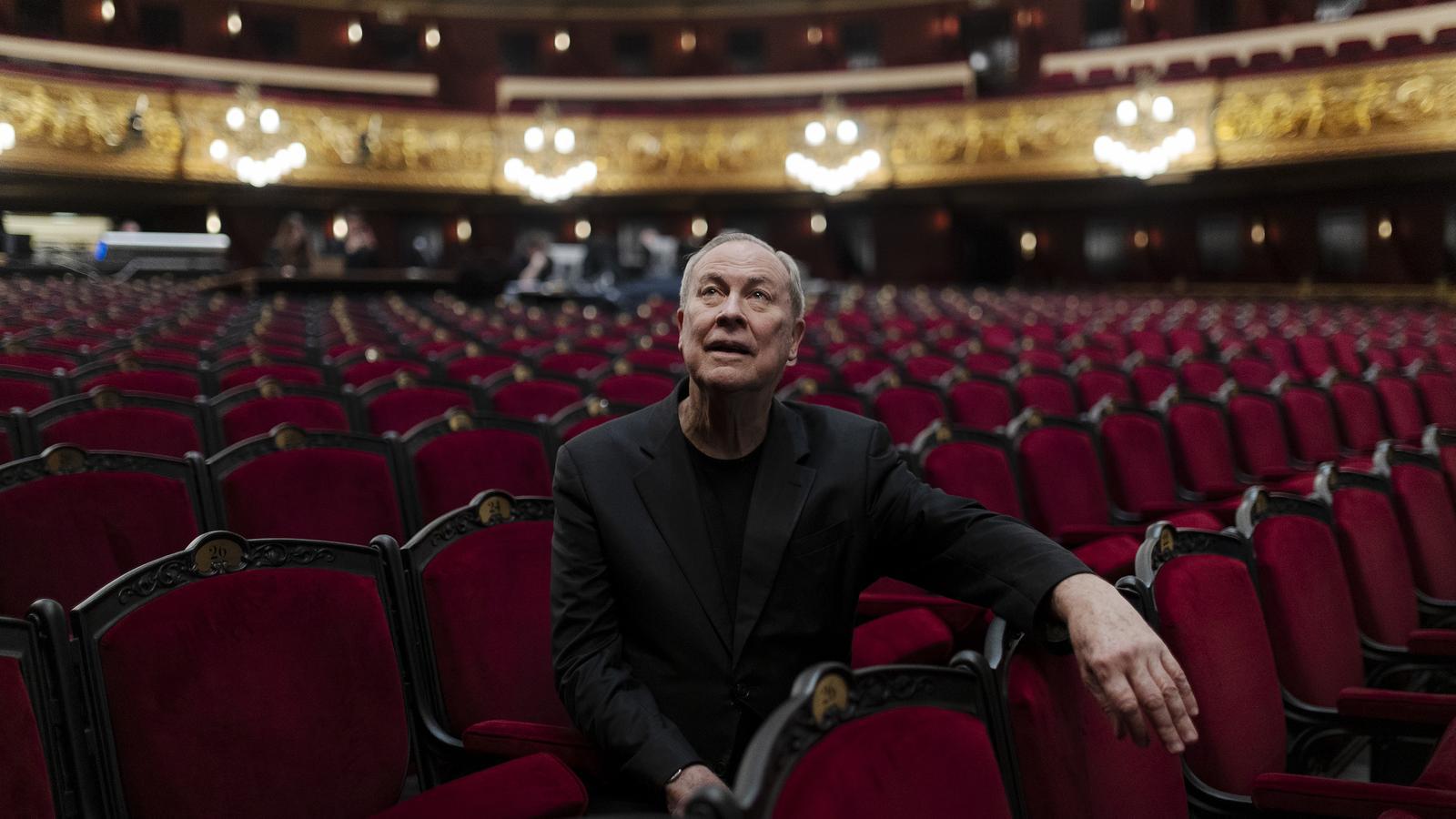Robert Wilson, the total artist of avant-garde theater, dies
The director of 'Einstein on the Beach' has died at 83 "after a brief but acute illness."


BarcelonaIn it Weimar KunstfestTwo years ago, among dozens of students who listened to him with devotion, or in a dressing room at the Liceu last year, welcoming this journalist for an interview with a studied posture, the theatre director Robert Wilson (1941-2025), who died this Thursday at the age of 83, was imposing. XX, and he accentuated it with a serious attitude. But everything changed when he started talking, whether about his working method, his most notable works or the fact that he still felt as if he had. "six years" every time he started working on a new garment. Then his eyes would light up and he might start playing different characters to accompany his explanations just by modulating his voice.
"The mind is a muscle," Wilson said. He also said that "the body moves faster than we think" and that it is necessary to learn to be "mechanical" in order to be freer. To the director of the Museu Tàpies, Imma Prieto, who invited him to work with the puppets that Joan Miró made for Death to the Merma When she was the director of the Es Baluard museum, Wilson summed up her interest in theatre as a total art. "It's architecture, painting, light, poetry, dance, music and philosophy. All the arts can be found in what we call theaterIn the Latin sense of the word, ancient theatre was opus, that is, everything included," said Wilson, who began by making audio recordings for Miró's puppets and ended up making a play.
"Wilson turned the way we understand theater upside down. When I saw him work, I realized he wasn't a theater director, but an artist who thinks about the scene. Doing lighting or movement with him was understanding how he calculated every gesture to the millimeter, how he painted the scene," Prieto recalls. In fact, Wilson is considered a revolutionary for the way he played with time, slowing down the actors' movements and dialogue, when there was any, and for the power of his images, characterized by their minimalism, characterized by their minimalism. with very simple images," recalled artistic director Felipe Fernández in the documentary Absolute Wilson.
The news of Robert Wilson's death has been made public by the Watermill Center, the creative center in New York that he founded and of which he was the artistic director. Discreetly, Wilson died "after a brief but acute illness." "Despite facing his diagnosis with determination and a clear vision, he felt the need to continue working and creating until the very end," the statement reads.
In Barcelona, Wilson visited the Liceu for the last time last year to present your version ofThe Messiah by Handel with Mozart's arrangementHe debuted in the 1992-1993 season withEinstein on the beach, Philip Glass's opera, and returned withPelléas et Mélisande, by Debussy, 2011-2012. And his revolutionary staging ofUbu It could be seen at the TNC.
Initial training as an architect
Born in Waco, Texas, into a conservative environment, Wilson's training began in architecture and painting. He became interested in dance when, after moving to New York, he was drawn to the work of choreographers such as George Balanchine, Merce Cunningham, and Martha Graham. Wilson achieved international success in the early 1970s with Deafman glance (Le regard du sourd), a silent opera he created with Raymond Andrews, a deaf-mute boy he adopted. A few years later he included texts by an autistic teenager, Christopher Knowles, in Einstein on the beach(1976), the groundbreaking opera he made with Philip Glass.
Throughout his career, Wilson worked on more than 200 productions, including Life and times of Joseph Stalin(1973-74),Death, destruction & Detroit(1979) and the project launched coinciding with the Los Angeles Olympic GamesThe civil wars(1983-84), which was supposed to last 12 hours, but was left unfinished. And throughout these years, Wilson collaborated with great authors, musicians, and artists such as William Burroughs, Tom Waits, Laurie Anderson, David Byrne, Susan Sontag, Marina Abramović, and Lady Gaga. Sontag said of Wilson in the same documentary that he had "endless ambition" but was too "eccentric" to achieve the "commercial success" he craved. But, instead, his work influenced different generations of artists and can be found in popular works such as the musical The Lion King.
A life marked by generosity
For his closest collaborators, including the Figueres-born architect Enric Ruiz-Geli, Wilson was "Bob Wilson." And Ruiz-Geli remembers his foundation, the Bird Hoffman Watermill Center Foundation, of which he is a trustee, as an exceptional place. "The Watermill Center is not the Bob Wilson museum, but the artists' home, our home, your home. A laboratory of performance, a place to dream of transdisciplinary futures," says Ruiz-Geli. "It was precisely here where Bob spent his last days of life," he explains. In fact, the center reopened this Thursday at 4 p.m. local time. "Bob's life was marked by generosity," he adds, "he dedicated it to. To defending the imagination and art of childhood. To celebrating and staging the world of autism. A life dedicated to silence." And that silence is designed to be "heard."
"Bob's life was dedicated to stopping the speed of technology. In the classics. To shakers", continues Ruiz-Geli. "A life dedicated to ceramics. To collecting my children's drawings, to loving design. A life dedicated to the people most freaks and more woke that there is in the United States. A life dedicated to: Have a great day". "Witnessing that generosity over these years fills me with energy and responsibility. And that responsibility remains silent," he concludes.
